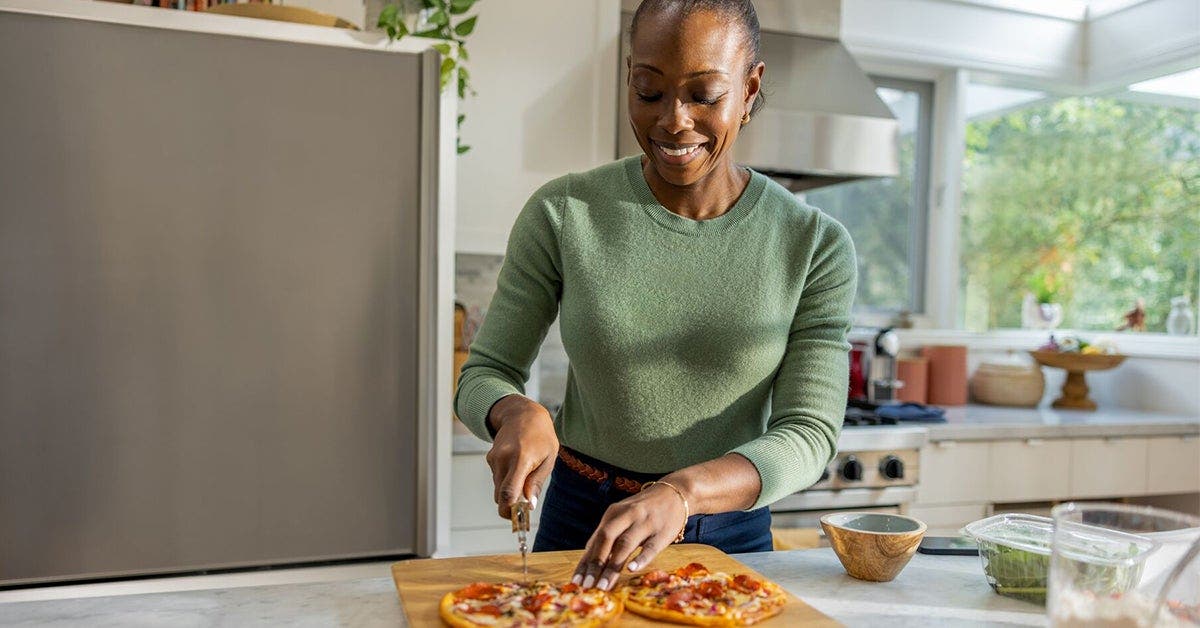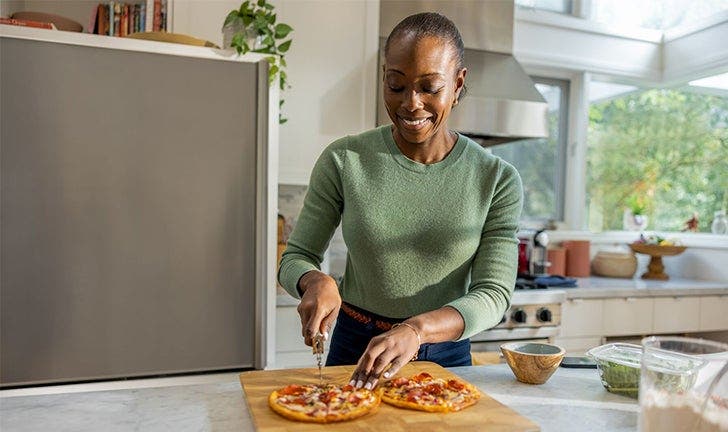8 Ways to Level Up Your Meal-Prep Game


Spend a few minutes scrolling through social media, and it’s clear the meal-prep trend isn’t going anywhere. If you’ve ever tapped to like a friend’s photo of delicious, identical, portion-controlled meals stacked in pretty glass containers and wished those were your lunches, you might want to hop on the bandwagon, too.
Prepping meals and recipe components ahead of schedule isn’t just about social media clout, of course. It can simplify trips to the grocery store, cut down on time spent wondering, “What am I going to eat today?”, and help you stay on track for whatever your health and wellness goals may be, explains WW Food Director Sherry Rujikarn. Basically, meal prep is a giant gift to Future You.
That said, prepping batch recipes and bulk components is a little different from cooking on a smaller scale. That’s why we asked our food and nutrition experts to share their 9 favourite hard-won hacks that can streamline meal prep and help you eat well for days.
1. Consider your actual needs.
Before you start cranking out finished dishes, you’ll need to figure out what you’re actually doing here. So devote some thought to meal planning as a first step and think about your cooking goals: Maybe you want to center your meal prep around items that are on sale at the store, a new recipe you’ve been hankering to try, or your usual faves, just supersized.
You’ll also want to assess when you’d benefit most from eating a meal you made ahead of time: Are you busiest in the mornings? Consider prepping breakfast for the next few days. Are you regularly glued to your computer in midday meetings? Get a string of lunches ready to go. Is your family ravenous by 5:30? Prepping dinner is probably a wise impulse. Once you lock in your lineup and recipes, consider which ingredients you have on hand, what you need to buy, and any kitchen tools you might be missing to make it all happen.
2. Normalize not doing everything on Sunday.
Sure, Sunday afternoons may seem like the default window for devoted meal prep, but if you’d rather do something else with your weekends, don't feel pressured into kitchen toil. Designate a day and time based on your schedule—even if that means first thing Tuesday mornings. One tip: Until you get the hang of things, consider blocking off more time than you think you need. Washing, prepping, cooking, and storing everything requires a larger window when you’re working with more food than usual. Trust us: There’s nothing worse than realizing you have to hop on a Zoom call midway through dicing a jumbo onion.
3. Don’t be a DIY hero.
As you scale up your kitchen operations, the work that goes into larger-than-usual recipes can escalate quickly. Peeling and mincing a couple of garlic cloves for your favourite pasta dish may be a breeze, but quadruple that number for an eight-serving batch, and garlic suddenly becomes a Major Time Consideration. Instead of panicking or ditching the recipe altogether, lean into convenience items that save you some gruntwork, says Jackie London, MS, RD, CDN, head of nutrition and wellness at WW. Items such as jarred minced garlic, prewashed greens, precooked rice, and frozen chopped veggies can be game changers when it comes to getting nutrient-packed meals prepped and packed.
4. Platter as you prep.
Chopped ingredients can pile up quickly when you’re slicing and dicing for multiple meals. And you need as much real estate as possible on your cutting board for efficient veggie wrangling and knife work, Rujikarn says. She recommends transferring chopped ingredients to a large serving platter as you go—an alternative to using multiple little bowls. Not only can this help keep you organized; it streamlines cleanup by giving you just one thing to wash.
5. Build a stash of staples.
For go-to ingredients you use in all kinds of recipes—looking at you, chicken broth and fresh herbs—plan a session to prep them in bulk and freeze the surplus for later use. Create small portions by divvying ingredients into an ice cube tray, and then toss however many cubes you need into a hot pan whenever the time comes. (You might want to keep a dedicated tray on hand for this task, so your actual ice cubes don’t take on a faint tomato-sauce taste.)
This trick is also useful for prepping smoothie ingredients since blended smoothies tend to separate and get watery when made in advance. Freeze cubes of juice or flavoured water ahead of time, then toss a few into individual reusable bags with your fave fruits and/or veggies. Next time you’re in the mood for a frosty bev, all you’ll have to do is grab a baggie from the freezer, dump the contents into your blender with a bit of liquid, and sip away.
6. On lazy days, just do sauces.
Don’t have the energy or time to prep a major batch recipe this week? We get it. As a plan B, consider making a few sauces for the week instead. A great sauce can completely transform a dish from basic to bursting with flavour—without a huge time investment in advance, Rujikarn says. You can spoon sauces on everything from leftover roasted veggies to a supermarket rotisserie chicken. And you may already have most of the ingredients you need for simple, high-impact dressings like a no-cook tomato barbecue or mustard vinaigrette. A bonus time-saving tip from Rujikarn: “For less cleanup when making sauces, mix them directly in the food containers you plan to refrigerate them in.”
7. Freeze meals before you’re sick of them.
No matter how excited you are for a certain dish at the beginning of the week, food boredom is real. So know this: You don't necessarily need to eat an entire batch recipe on consecutive days. Instead, consider freezing some of your prepped meals. That way, you can just reheat and enjoy later on, when you’re actually in the mood to eat them again. Certain meals are especially freezer-friendly, including chilies, casseroles, and pasta bakes.
For best results, freeze single portions instead of transferring everything to a large storage container, says Leslie Fink, MS, RD, WW nutritionist and recipe editor. In the interest of food safety, be sure to label the date a dish was originally prepared and if you’re taking it straight from the oven to the freezer, portion it out, cool in the fridge, and then transfer to the freezer. “When properly frozen and stored, cooked food generally retains its quality for three to six months,” she adds.
8. Allow for random deliciousness.
Even with careful meal planning, you're bound to end up with odds and ends in your fridge that have no assigned role in a coherent dish. Instead of letting random ingredients languish, prep them so they’re set to enjoy. You'll be way less likely to waste that extra sweet potato or serving of rice when it's ready to eat. This aligns with a meal prep strategy called component cooking, which is all about readying simple versions of proteins, veggies, and grains to mix and match in dishes such as grain bowls, tacos, and pizza.
To that end, Rujikarn recommends cooking extra ingredients when convenient: If you’re making a recipe that calls for three grilled chicken cutlets, slap a fourth cutlet on the grill for a filling sandwich later in the week. If you’re roasting carrots, toss a few extras on your baking sheet to use in a pasta salad down the line. To find a recipe that uses your ingredients, open the WW app and tap the “What’s in your fridge?” feature.
--
Nicole Saporita is a senior content manager for consumer wellness at WW. A writer, editor, and content strategist based in New York, she specializes in health & wellness, lifestyle, consumer products, and more. Her work has appeared in Good Housekeeping, Prevention, and REDBOOK magazines.
